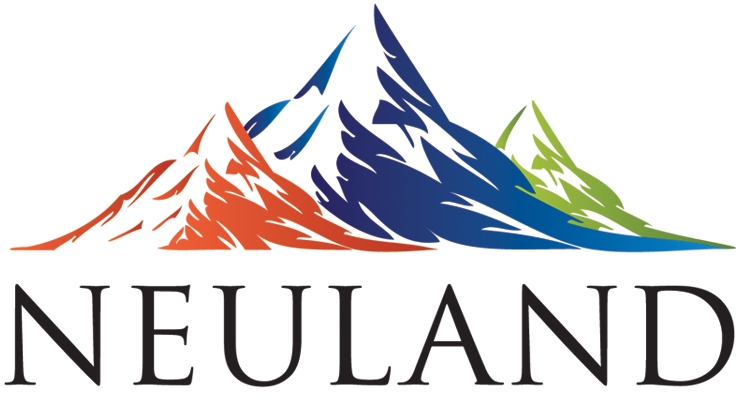
#neulandlab 🌋🌋 read on to understand this company and its story of transformation. On twitter, 🌋 has become synonymous with neuland, and this is how i will use it throughout the thread. If you like the thread, plz retweet & help fellow investors learn 

Starting with a simple primer on the Pharma industry. They make medicines for all of us. The part of the medicine which gives it its potency against the ailment it cures is called API: Active Pharmaceutical Ingredient:
en.wikipedia.org/wiki/Active_in…
en.wikipedia.org/wiki/Active_in…
(here is a reference few people will get, but have to make it since I love it :D):
If Guardians of the globe (imagecomics.fandom.com/wiki/Guardians…) were a medicine, Omniman (imagecomics.fandom.com/wiki/Nolan_Gra…) is the API.

If Guardians of the globe (imagecomics.fandom.com/wiki/Guardians…) were a medicine, Omniman (imagecomics.fandom.com/wiki/Nolan_Gra…) is the API.


@InvincibleHQ Back to 🌋. There are pharma companies which sell APIs as well as the finished medicine (FDF: Finished Dosage Formulation). Neuland are pureplay API manufacturers. This provides them some advantage since they don't compete with their clients (the FDF makers).
@InvincibleHQ Medicine is diverse. There are medicine which were first discovered in 1920s (ncbi.nlm.nih.gov/pmc/articles/P…), to those being created now (nytimes.com/2021/06/10/hea…). Naturally then, some of this involves very complex chemistry to manufacture, others are relatively easier to manufacture.
@InvincibleHQ Those that are easier to manufacture naturally have a larger number of competitors manufacturing them. End up becoming commoditized with prices being dictated by market dynamics. These are what constitute the GDS: Prime API segment for 🌋
@InvincibleHQ These are typically also consumed and produced in high volume and entry barriers being low, are priced low.
@InvincibleHQ Those that are a bit harder to manufacture, and produced in low volume, higher price per unit, constitute the specialty API segment. Higher pricing power here, but limited by the competitive environment.
@InvincibleHQ There are those APIs that 🌋 manufactures custom for a customer these come under the CMS segment (Custom Manufacturing Solutions). Often, these are innovator companies, and the molecules are APIs for newly discovered molecules.
@InvincibleHQ An innovator typically only has 1-2 suppliers for a molecule since secrecy is of utmost importance. See @unseenvalue Sajal sir’s Webinar to understand this space best:
indianinvestingconclave.com/recordings/97
indianinvestingconclave.com/recordings/97
@InvincibleHQ @unseenvalue Story of 🌋 #neuland is a story of transformation from being a bulk API manufacturer to switching towards more higher value, difficult to make products: specialty (low volume high complexity) generics API manufacturing as well as CRAMS [custom synthesis and innovator synthesis]. 



@InvincibleHQ @unseenvalue Let us analyze each business segment now. Starting with Prime APIs. First, you might ask, why do they make Prime APIs, since margins are volatile. This is for 2 reasons: as a strategic decision, #neuland always wants to maintain supply commitments to clients.
@InvincibleHQ @unseenvalue They want to be a dependable API supplier of choice. Second, prime APIs provide volume stability. If Neuland stopped making these, revenues would reduce dramatically. Will improve margins here through operational efficiency and scale. 

@InvincibleHQ @unseenvalue Specialty APIs. Strategy here is to focus on high entry barrier molecules, complex chemistries, bring innovation to the process chemistry by improving eco-friendliness, cost efficiency, ease of handling, purity. 🌋 then files patents to protect their process IP 

@InvincibleHQ @unseenvalue CMS. This segment is fastest growing. Poster boy of this segment is the deutetrabenazie API for Austedo (austedo.com) medicine produced by innovator Teva for treating cholera in patients of Huntington’s disease
moneycontrol.com/news/business/…
moneycontrol.com/news/business/…
@InvincibleHQ @unseenvalue CMS revenues have gone from 50 cr in FY14 to 270cr in FY21. That is a CAGR of 27%. Neuland wants to grow topline at 15-20% overall. So we can see where most of that growth is coming from. 

Lifecycle of a molecule consists of pre-clinical studies (eg: on animals), stage 1, stage 2, stage 3 trials, development, and commercialization. Neuland management clearly communicates the status of CMS projects/molecules each Q. 

Those 6 commercial APIs contribute half the CMS revenue, and all other projects half. Management has guided for 6 more APIs in last stages of development to be commercialized in next 2-3 years. What will happen to revenue when that happens? 

All of this you could have learned by going through seminars and some investor presentation. Let us now deep dive into the quality and scientific capabilities of Neuland which is what make it a promising investment. Can think of these are durable competitive advantages.
Regulatory Compliance
For anyone to sell APIs in USA, they need to file Drug Master FIle (DMF) which is a description of how they will manufacture the APIs to USFDA (US Food&Drug Administration).
For anyone to sell APIs in USA, they need to file Drug Master FIle (DMF) which is a description of how they will manufacture the APIs to USFDA (US Food&Drug Administration).
If USFDA approves DMF, then API manufacturer can sell APIs to FDF maker who sells them in US. USFDA then regularly inspects the facilities where APIs for US exports are manufactured to make sure API company is adhering to the specific processes. This is known as USFDA inspection.
See to learn how compliance works.
In over 30 years of USFDA inspections, Neuland has not gotten a negative outcome of these inspections (Called OAI: Official action initiated), even once. Compare Neuland to other pharma companies you know.
In over 30 years of USFDA inspections, Neuland has not gotten a negative outcome of these inspections (Called OAI: Official action initiated), even once. Compare Neuland to other pharma companies you know.

Regulatory compliance is a big source of competitive advantage for neuland because innovators can trust neuland to be a reliable API partner. It takes years sometimes to address USFDA OAIs.
Complexity of APIs
I went through all the APIs for which neuland has filed USDMFs and europe CEAs. pubchem.ncbi.nlm.nih.gov has data on complexity of the molecule which is computed using the Cactvs model.
I went through all the APIs for which neuland has filed USDMFs and europe CEAs. pubchem.ncbi.nlm.nih.gov has data on complexity of the molecule which is computed using the Cactvs model.
I plotted these as a function vs time. The molecules for which DMFs have not been filed yet were randomly distributed to occur once every 4 months (assuming 3 DMFs every year) to obtain following graph: 

Are the APIs getting increasingly complex? That last one, is known as semaglutide. It’s formula is C_{187}H_{291}N_{45}O{59} and complexity is 9590.
For comparison Paracetamol's complexity is 139. Ciprofloxacin's is 571. I had tweeted few months ago about it:
https://twitter.com/sahil_vi/status/1350808426473943042?lang=en
Science Advantage.
#neuland has been aggressively investing in building the right workforce. While sales only increased 14% from FY19 to FY20, number of scientists working for neuland increased 40% YoY from 200 to 282
#neuland has been aggressively investing in building the right workforce. While sales only increased 14% from FY19 to FY20, number of scientists working for neuland increased 40% YoY from 200 to 282
One of the best sources on Neuland’s competitive advantages is brochure they have on website. 🌋 has published peer reviewed article on PharmTech sharing a newly developed strategy to increase sample loading for peptides 12 fold compared to conventional Prep-HPLC techniques.
Link to brochure:
neulandlabs.com/wp-content/upl…
neulandlabs.com/wp-content/upl…
High quality Science & Research is certainly not the hallmark of a commodity. Neuland has been investing into this space for over a decade. Imagine the scientific leverage which is building up here. 

Look at how their R&D investments have been. This pic was tweeted by @unseenvalue Sajal sir some months ago:

https://twitter.com/unseenvalue/status/1323433965412257792

Even among the prime APIs, a scientific org finds ways to build competitive edge. Operating leverage & scale advantages are benefits that any & every company would enjoy. But neuland has gone ahead that & filed multiple Process patents for these APIs. 

These process patents demonstrate their appetite for applying their research acumen and technical knowhow to improve the manufacturing processes and drive efficiencies. Read each one carefully. 





“Industrially viable”, “cost effective”, “high purity”, “easy handling”, “eco friendly” are words we see repeatedly in these neuland patents.
Fewer competitors.
The newer DMFs have fewer competitors. The ones with NA date, DMF hasnt been filed. There is an element of time bias here but we can still see that newer molecules definitely have much fewer competitors than older ones.
The newer DMFs have fewer competitors. The ones with NA date, DMF hasnt been filed. There is an element of time bias here but we can still see that newer molecules definitely have much fewer competitors than older ones.

Quality of Management
The business suffered two severe down years in FY18 and FY19. A key part of how I judge managements is how they communicate in down years. Both these annual reports are a treat to read:

The business suffered two severe down years in FY18 and FY19. A key part of how I judge managements is how they communicate in down years. Both these annual reports are a treat to read:


Every time the business underperformed, the management clearly outlined the problem, talked about concrete remedial steps and one can see them walk the talk as well through the various concalls.
Management has been very conservative in giving growth (15-20%) and profitability (20% EBITDA) guidance which is another thing I like about the management. Management has been very conservative in giving growth guidance which is another thing I like about the management.
In 30+ years of operations, they have been audited 30+ times by USFDA and have not had any warning letters. The compliance track record and culture itself is a huge competitive advantage for Neuland.
Management has talked about how they conduct mock USFDA drills in order to maintain this track record. Compliance is a culture. Neuland has it. Eventually the markets will reward this, imho.
Market Prediction
Many analysts spend time predicting market sizes for APIs, using it to predict revenues. IMO this is very difficult. There is a HDFC securities 2018 research report for Neuland. I quote:
Many analysts spend time predicting market sizes for APIs, using it to predict revenues. IMO this is very difficult. There is a HDFC securities 2018 research report for Neuland. I quote:
“Beyond 2 yrs, there are many API opportunities for NLL. This list includes Sugammadex, Paliperidone, Posaconazole, Deferasirox, Dabigatran, Lurasidone and Bosentan. Some of these molecules are low volume products but could add meaningfully on EBITDA line”.
Sugammadex today has 19+ competitors. I do not think anyone has much skill in predicting market shares for molecules since we absolutely do not know how competitors pipelines would evolve.
Warren Buffett says that Risk comes from not knowing the biz. Let me clearly state what I dont understand about #neuland:
1. Looking at our 70 odd API molecules portfolio that we work on, why do we continue to file USDMF for APIs with 15-20 global competitors (eg: Sugammadex Sodium, Ticagrelor, apremilast, posaconazole) even after 2018?
These APIs seem like the ones where competitive intensity is high and we should understand whether neuland has any unique or competitive advantages in manufacturing these molecules that lead us to filing these USDMFs.
2. Given that our CMS portfolio has much higher profitability and margins, why do we not spend all incremental capital on CMS business? Is it due to a limited demand for the capabilities or some other reason?
We understand the business viewpoint of continuity for all existing molecules, but why do we continue to deploy capital into newer prime or speciality APIs which have higher competitive intensity and lower profitability?
3. We suffered loss of production in Q42018 and 2019 due to raw material shortages due to supply disruption from China. If the same issues were to repeat today, how much would our topline or bottomline suffer?
Trying to get a sense for the extent to which this risk has now been mitigated with the strategic backward integrations, geographical multi-sourcing and fungible capacities.
Want to add one last thought. From what I have seen, the most durable competitive advantage for a business is its management's ability to create new engines of growth. Neuland management started working on Peptides and Deuteration many many years ago.
These are the sort of managements which sow the seeds for the growth of next decade, today.
Look at this peptide manufacturing technique #neuland has made in collaboration with Jitsubo:
neulandlabs.com/blog/2019/05/1…
Look at this peptide manufacturing technique #neuland has made in collaboration with Jitsubo:
neulandlabs.com/blog/2019/05/1…

Lastly, want to thank @unseenvalue sajal sir, @punitbansal14 punit sir @AdityaKhemka5 aditya sir, @tusharbohra tushar sir, @soicfinance ishomit, & many many others who have contributed immensely to my understanding of this space. 🙏🙏🙏
@unseenvalue @punitbansal14 @AdityaKhemka5 @tusharbohra @soicfinance If you like the thread, please consider retweeting the first tweet and help share this knowledge with more investors. Numbers and ratios are commodity, knowledge is the true edge for a discerning investor. 🙏
Disclaimer: I am positively biased and this is part of my top 3 holdings.
This is only for education, not a buy or sell recommendation.
This is only for education, not a buy or sell recommendation.
• • •
Missing some Tweet in this thread? You can try to
force a refresh










